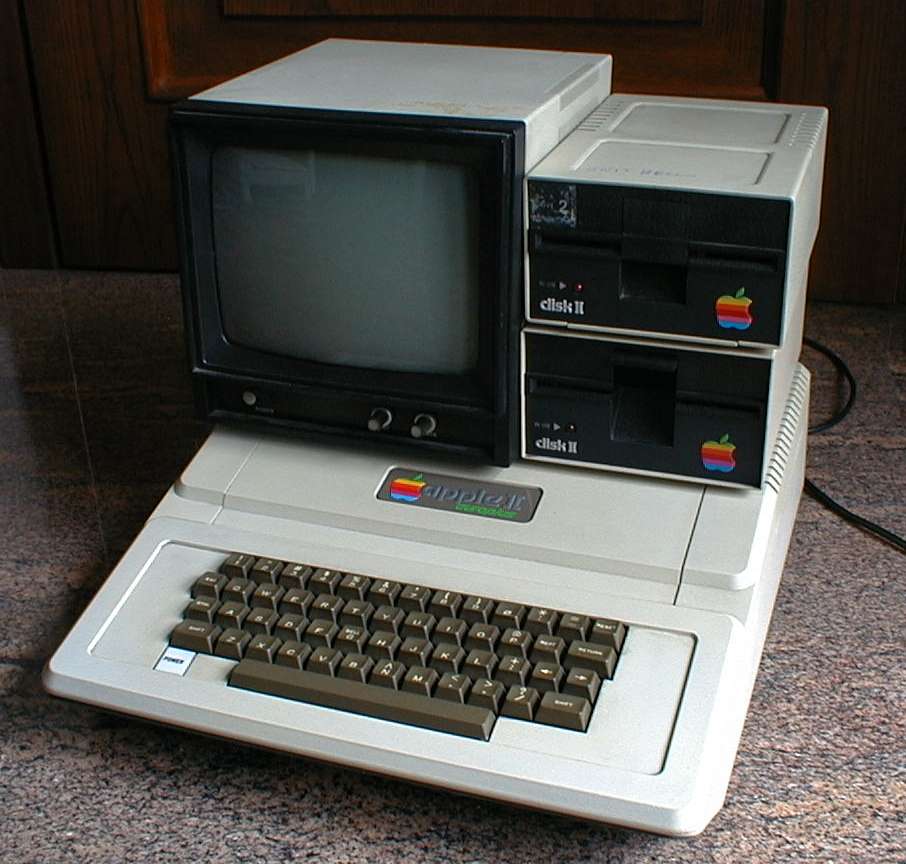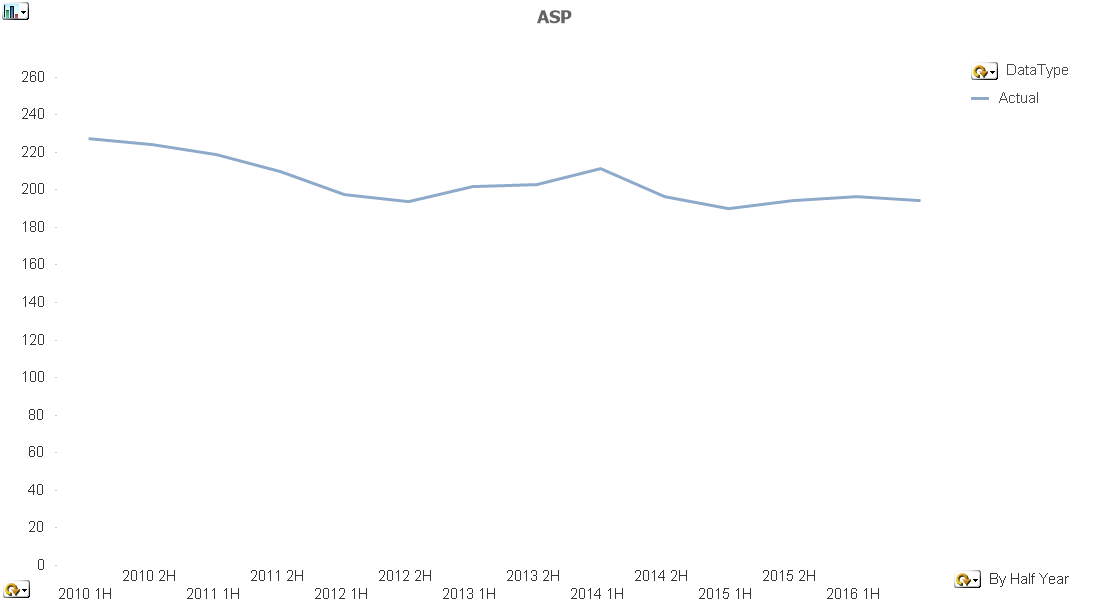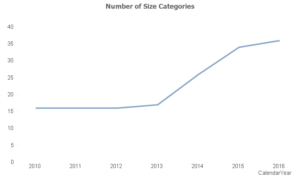Display Daily’s publisher, Meko, started researching the market for desktop monitors in Europe in 2000. We were interested in the volume of the market, but also the value. I had been running a company at the premium end of the market, that couldn’t compete on volume, so I was extra sensitive to issues of value, so we tracked prices ourselves, to calculate market value.

About two or three years into the development of the research service, I was talking to a colleague and said “You know what? We haven’t calculated the ASP. Why don’t we do that?”. So I created a chart of the ASP by simply dividing the value that we had calculated by the volume. However, the result was not what I expected. I had been in the market for around 15 years by then, and I knew that prices were always falling. However, the ASP chart that I had created showed a flat and straight line. The ASP was not falling. There had to be something wrong with the data, so I spent a couple of days deeply digging into the data. However, it was true, the ASP was flat. It wasn’t the data that was wrong, it was my understanding of the market.
 After some thinking about it, I realised that even if I only thought about my own actions, there was some reality in a flat ASP. I bought my first PC way back around 1980. It was an Apple ][ (16K – not MB, let alone GB – of memory and with a 1MHz clock speed in an 8 bit CPU, using cassettes for storage) and the list price was around $1,500 at the time, although I spent less. I bought mine from a UK discounter that was in dispute with Apple at the time and expected a modified US version. However, what arrived was a genuine ‘Europlus’ model, manufactured in the, then newly-opened, factory in Ireland.
After some thinking about it, I realised that even if I only thought about my own actions, there was some reality in a flat ASP. I bought my first PC way back around 1980. It was an Apple ][ (16K – not MB, let alone GB – of memory and with a 1MHz clock speed in an 8 bit CPU, using cassettes for storage) and the list price was around $1,500 at the time, although I spent less. I bought mine from a UK discounter that was in dispute with Apple at the time and expected a modified US version. However, what arrived was a genuine ‘Europlus’ model, manufactured in the, then newly-opened, factory in Ireland.
I realised as I looked at the flat ASPs that twenty years after I bought my first PC, my PC at the time still cost around $1500. In fact, some fifteen years later again, I have just bought a new PC and it cost around $1,500 (or little a bit more). It turns out that, mentally, around that amount of money seems reasonable to me to spend on a serious work PC. Now, the kind of PC that I recently got is absolutely incredible in performance, mobility and reliability compared to my Apple ][. But I’m a $1500 PC guy.

So, thinking about the monitors, I realised that often buyers will have an idea of how much a monitor should cost, so as long as the customer got better value than last time they had bought, they would probably spend the same amount again. Individual products dropped in price, but as long as the user could upgrade what they bought, it probably seemed reasonable to spend again. Monitors at that time had gone from 12″ monochrome CRTs to 14″ monochrome, to 14″ colour, to 15″ FST to 17″ to 19″. The same had happened in PCs.
For a few years from around 2003, the ASP of monitors did drop and that was simply because rather than clients buying a range of different monitors (before that they often bought a lot of low cost 15″ and 17″ CRT monitors, together with a limited number of 19″ to 21″ sets for specialists and managers), the industry was switching to LCD and because the LCD makers were just focused on driving cost down, 85% or more of the market simply bought either 17″ or 19″ 1280 x 1024 sets. Although 1920 x 1200 24″ LCD monitors were available, they were radically more expensive and clients wouldn’t upgrade in serious numbers. So, prices just went down.
Eventually, LCD makers realised that concentrating just on driving cost down was killing value in the market and now there are lots of different sizes, aspect ratios and resolutions and that is, generally, a good thing, although for the sake of the profitability of the market, we have probably gone too far. So, what has happened to ASPs recently?
 ASPs for monitors sold in Europe. Source:Meko
ASPs for monitors sold in Europe. Source:Meko
The latest data from Meko’s research service shows that ASPs remain very flat. The main reason for this flattening of the ASP and slight rise in recent years is the growth in the number of categories which now means plenty of choice for monitor buyers. The number of size categories used by Meko in analysis and forecastingThere must be getting on for 100 or more different possibilities of size, resolution and aspect ratio available now, with even more if you take into account different panel types.
So we went from a time when there was little choice to a time when there is, probably, too much* choice, but at least buyers have a good choice of different products to buy, which means that they can spend what they expected rather than the industry encouraging them to simply spend less.
Bob
*A topic for another Display Daily, perhaps.

